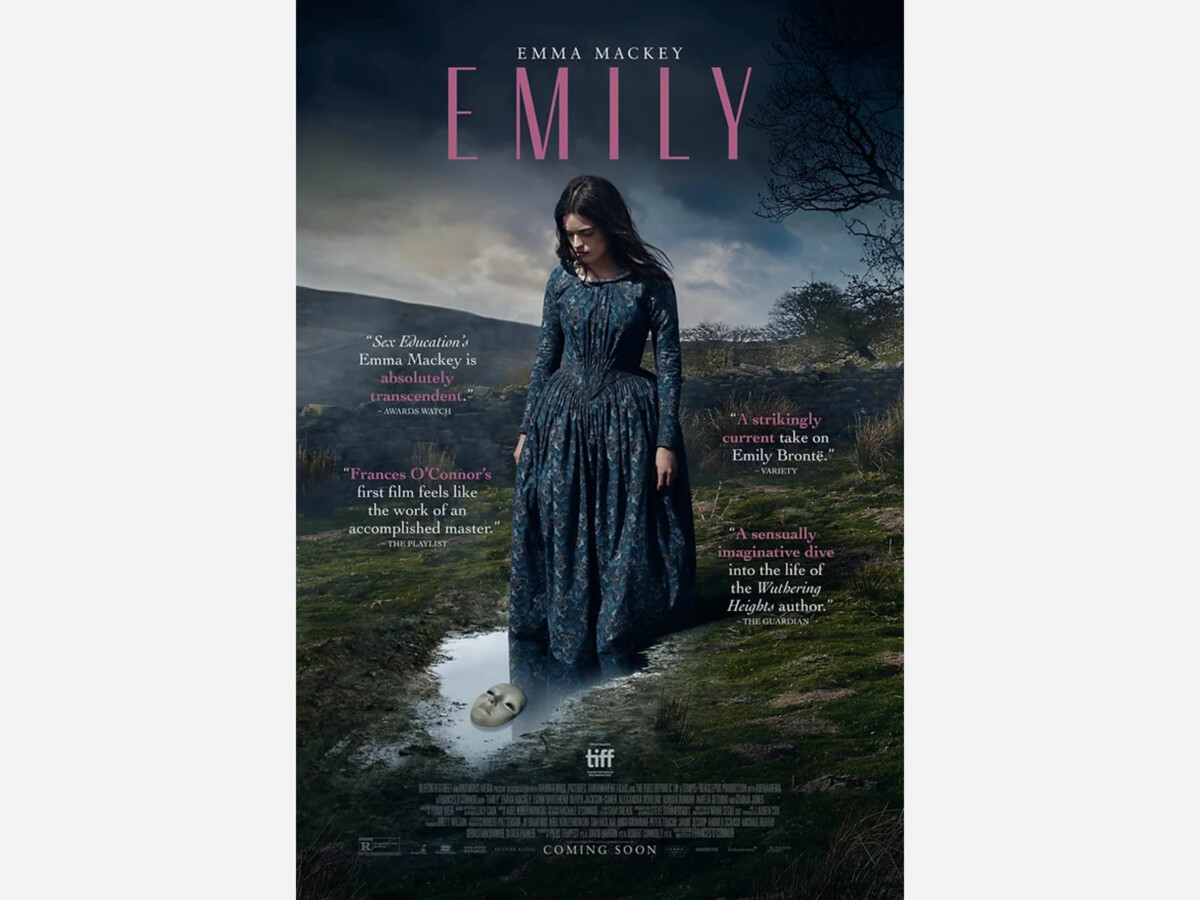Image

There is an interesting line that has to be walked when it comes to delivering a biopic that is worth watching for the general audience. It should work to make itself palatable while making itself interesting. It should aim to be truthful but at the same time should not be afraid to take liberties as the movie sees fit so long as it is not exploitative or too far outside what the average audience-goer knows about the figure at the center of the movie. Emily certainly takes liberties with the life of Emily Brontë; however, these changes do not detract from the experience overall.
Emily follows the story of Emily Brontë (Emma Mackey from Death on the Nile) as she embarks on the journey to write Wuthering Heights. She balances a complex relationship with her brother (Fionn Whitehead from Dunkirk), father (Adrian Dunbar from The Snowman), and two sisters (Alexandra Dowling from Game of Thrones and Amelia Gething from The Spanish Princess) with a burgeoning new relationship with the new curate named William (Oliver Jackson-Cohen from The Invisible Man) and her desire to do something more with her life in the aftermath of her mother’s death.
There has been a conversation in recent years to increase the number of categories for Academy Awards, including categories like color grading. When it comes to color grading, unless a movie is doing something egregiously terrible (see The Whale) then it usually goes unnoticed. Emily
however does a lot of really interesting things with the visual language of the movie. By committing to this new visual style and allowing for the colors to pop (or dull back to a more muted color scheme) it allows for a faithful representation of the environment while still using the color to build a mood.
From a more narrative standpoint, Emily does what a lot of more independent movies over the past two decades have done which is focus on the indecision and existential dread that comes with youth. Like Tick, Tick… Boom! in 2021, the fact that the story does follow a real person who died young before getting a real chance to do more does add to the emotionality because the audience knows her fate when the character is going through her emotional turmoil regarding her legacy which leads to an interesting juxtaposition.
This movie should be watched in a theater because it is a case study of a film that has a unique visual language that requires the viewer to acclimate to it in order to understand what the movie is going for. It is the kind of thing that a theatrical experience (sitting down in a distraction-free environment without the option to give up on watching the film) would add to viewing because it allows the viewer a chance to immerse in the unconventional editing and pacing that is not necessarily a negative, however, it does make the beginning of the experience more about understanding how the story is going to be told than it is about progressing the narrative.
Final Score: 9/10